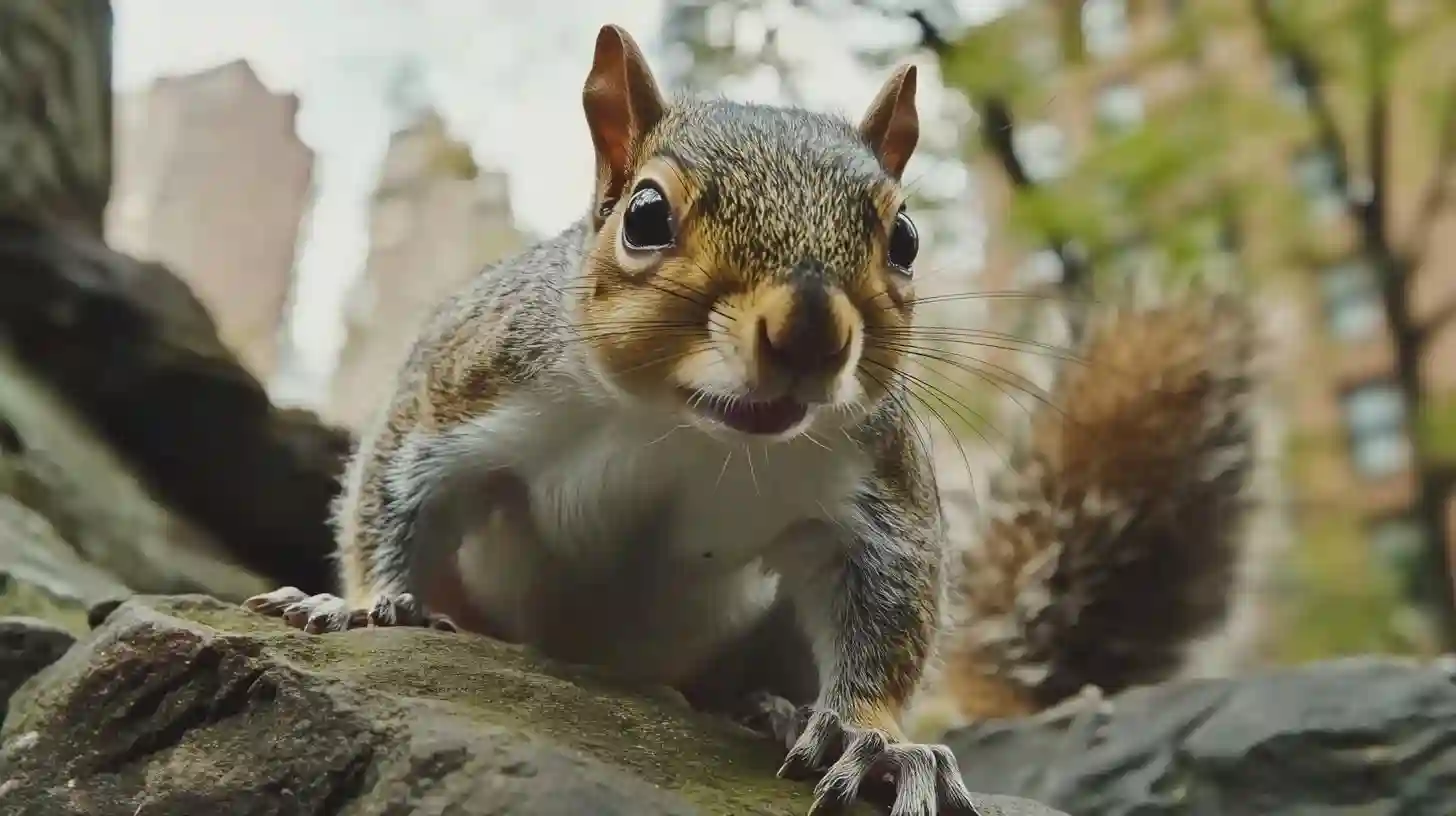
Squirrels have an extraordinary ability to adapt to various environments, with urban areas presenting a unique landscape for their survival and daily activities. These agile creatures, primarily known for their acrobatic feats in trees, have become increasingly prevalent in cities around the world. With streets, parks, and backyards serving as their playgrounds, squirrels exhibit behaviors that are both fascinating and indicative of their adaptability to human-dominated landscapes.
One of the remarkable aspects of urban squirrels is their resourcefulness when it comes to foraging for food. Unlike their rural counterparts who rely heavily on natural sources like nuts, seeds, and fruits, urban squirrels often scavenge through the remnants of human activity. Parks, public gardens, and even busy street corners can become treasure troves of discarded food. Squirrels can be seen rummaging through trash bins or foraging under picnic tables, quickly identifying potential treats left behind by picnickers.
Adaptation extends beyond their diet; urban squirrels have also altered their patterns of activity. In quieter, rural settings, these creatures are primarily crepuscular, most active during dawn and dusk. However, in the bustling environment of a city, they have adjusted to a more flexible schedule. During the day, they are often seen darting around busy sidewalks and navigating the complex web of buildings, cars, and pedestrians. This adaptability not only aids their survival but also allows them to coexist with the human population in ways that are often surprising.
Communication plays a vital role in the social structure of urban squirrels. Even in the noisy backdrop of city life, these small mammals have developed a nuanced system of vocalizations and body language to convey messages to one another. Alarm calls can be particularly interesting; when a squirrel perceives a threat, such as a hawk overhead or a dog approaching, it emits a distinctive sound that alerts other squirrels in the vicinity. This vigilant communication among squirrels can often lead to a rapid response, whereby they swiftly retreat to the safety of trees or hiding spots.
Another intriguing behavior observed in urban squirrels is their tendency to engage in cache-building, a practice that ensures food availability during scarce times. In cities, they are both inventive and strategic in selecting where to hide their treasures. They might bury nuts in flowerpots or stash food in crevices along park benches. However, they must constantly contend with the challenges posed by other urban wildlife. Birds, rats, and even other squirrels can be competitors when it comes to food resources. As a result, urban squirrels have developed a keen awareness of their environment, using their agility and quick thinking to protect their caches from thieves.
Nesting behaviors also reveal the adaptability of squirrels in urban settings. While tree cavities and dense foliage remain popular nesting sites, many urban squirrels have become skilled at utilizing man-made structures. They are frequently spotted building nests in attics, under eaves, or among the infrastructure of buildings. These nests, often made from twigs, leaves, and other debris, provide shelter from both the elements and potential predators. Their ability to thrive in such diverse settings showcases their remarkable ingenuity in finding or creating safe spaces for themselves and their offspring.
The interactions between squirrels and people can often lead to humorous and entertaining encounters. Squirrels in urban areas exhibit fearless behavior, often approaching humans in search of food. This curiosity can sometimes be met with surprise or amusement as passersby find themselves sharing space with these bold creatures. While some people enjoy feeding them, others may view this as an annoyance when squirrels raid bird feeders or dig up flowers. Nonetheless, these interactions speak to the intriguing relationship between humans and wildlife in urban landscapes.
Urban squirrels serve as a reminder of nature's resilience. They highlight the intricate connections that exist within ecosystems, even in bustling cities. Observing their behavior provides an opportunity to reflect on how wildlife adapts to the challenges of modern life, reminding us that even in our fast-paced world, moments of connection with nature can often be found in the most unexpected places. By sharing our environment with these captivating creatures, we can foster a deeper appreciation for the diverse lifeforms that thrive alongside us. Urban squirrels embody the spirit of adaptation, showcasing their ability to navigate the complexities of city life while maintaining the quintessential charm that makes them beloved by many. Their presence enriches urban biodiversity and invites us to engage with the world around us more mindfully, opening doors to a better understanding of the natural world within our urban landscapes.